To tree or not to tree, is a question many of you might have pondered on last month. The act of bringing an evergreen tree inside, dressing it up to suit our own definition of festive, and gathering around it to pass the shortest of days, is a curious tradition we’ve been drawn to for centuries. Where did this custom originate? What does the Christmas tree mean to you? And how can we extend its life, now the festivities are over?
Artist Tine Colen has been researching crafts and traditions for years, looking for ways to share and rethink them, and to integrate them into her own practice and life. A book of Christmas tales lured her into the world around (and beyond) the Christmas tree. While experimenting with tree tops, she became intrigued by the stories the material had to tell.
We’ve always admired Tine’s ingenious creations and are thrilled to share them in an ever-evolving window display throughout January 2025, starting from the 10th. In a couple of workshops, we’ll explore the related techniques together.
In what follows, we share Tine’s beautifully written project statement accompanied by some photos we took during a home visit.
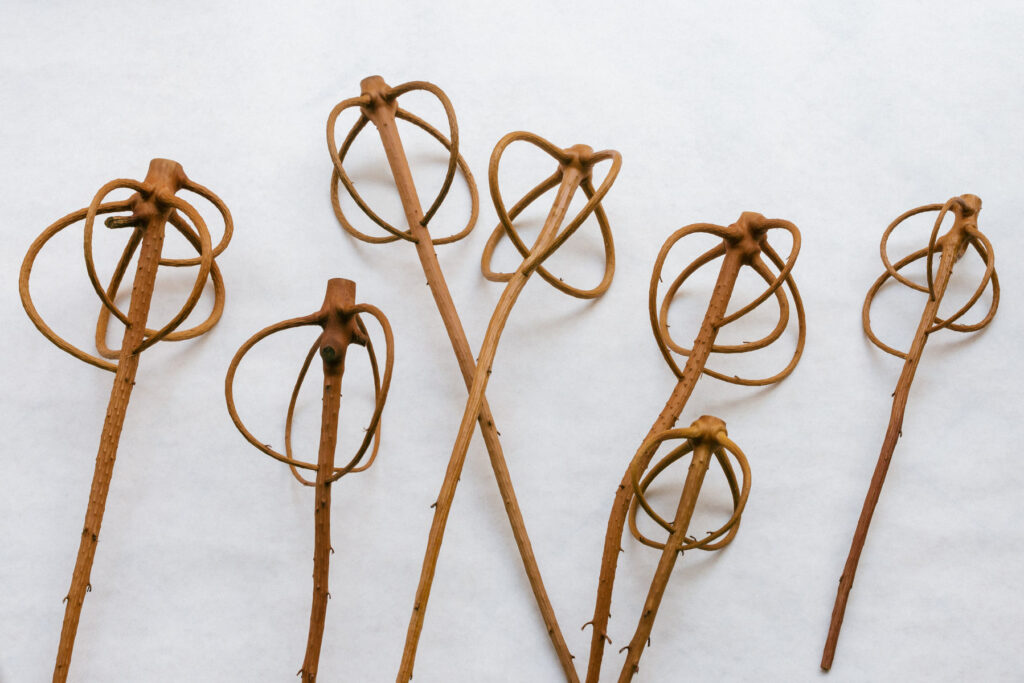
POT ORNAMENT STAND AND SOIL
It was an old custom to saw off the top of the fir tree that had been decorated in the house after Christmas. Trimmed, it turned into a whisk for stirring porridge that year. I read about it in a book of Christmas stories while reading to my daughters before bedtime. We hadn’t brought a Christmas tree into the house, but in the middle of January, the sidewalks were lined with discarded ones. On evening walks, armed with a bag and a saw, we collected treetops. These were trimmed and, through steaming, peeling, bending, and drilling shaped into whisks of various designs, which we shared with friends and neighbours.
Over time, I became more attentive to the systematics by which the side branches were positioned and could increasingly read a life story from the differently grown forms that arose from damages to the growth points. The recognition of that life makes following the principles of respectful harvesting a matter of course, and thus, in the following years, I also tried to give other parts of the wood a purpose as a utensil (such as a fork, knife, broom, apple picking stick, drying rack for the harvest, lamp stand…).
This curiosity naturally led me to the roots of the ancient custom of bringing a tree indoors to decorate. Unlike many folk traditions that fade with time, this practice has persisted remarkably. Even with the introduction of plastic alternatives and some hesitation from people to admit their preference for real trees, the tradition endures. Every year, between 50 and 60 million Christmas trees are cultivated in Europe alone.
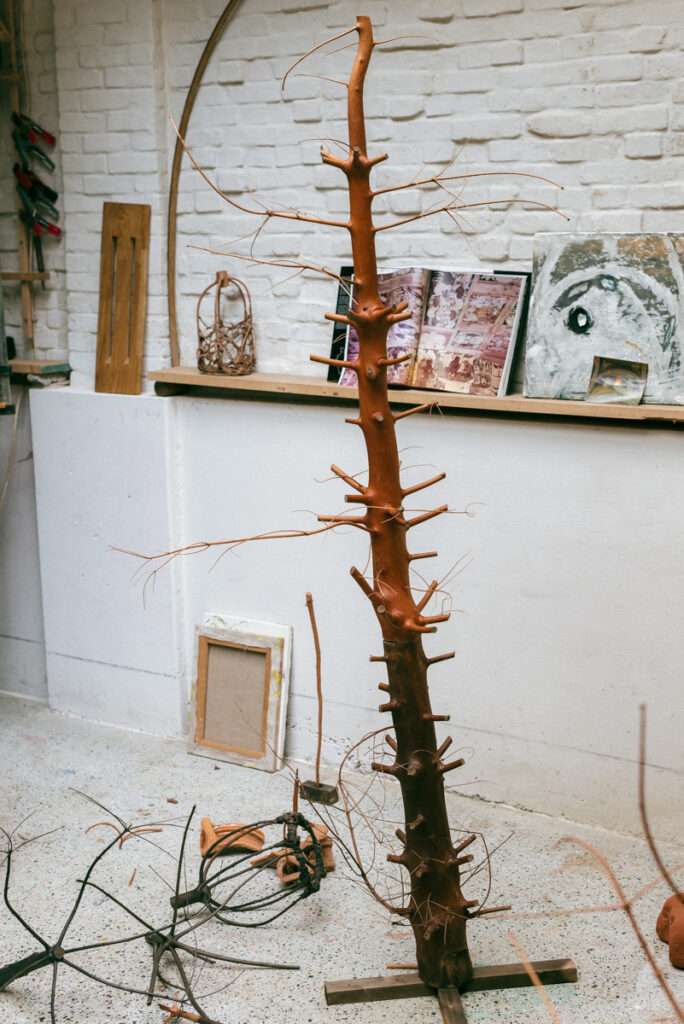
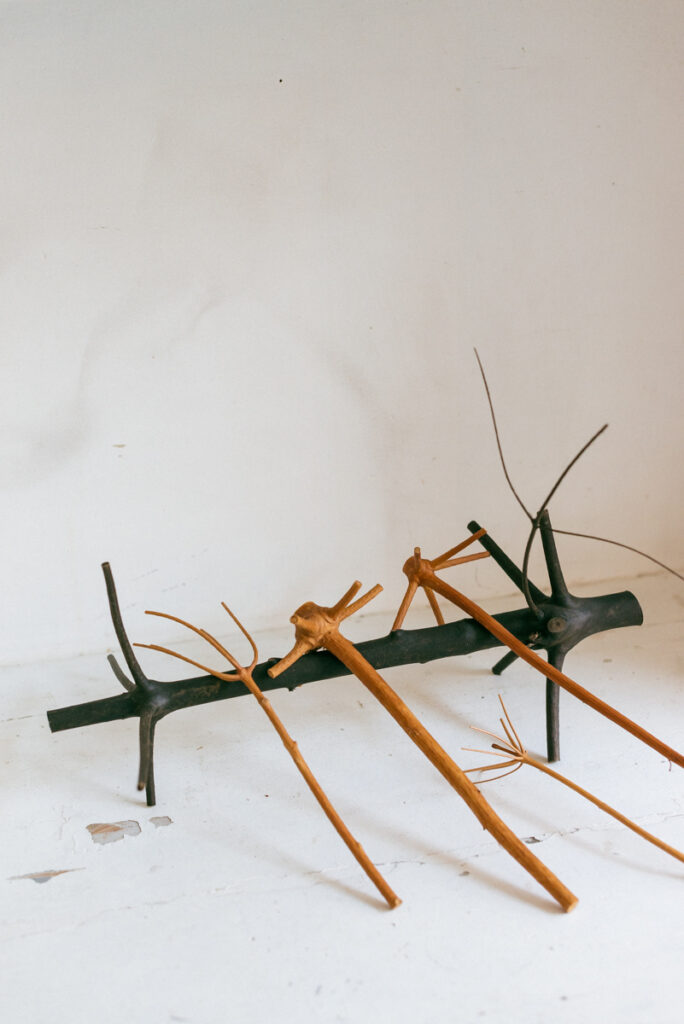
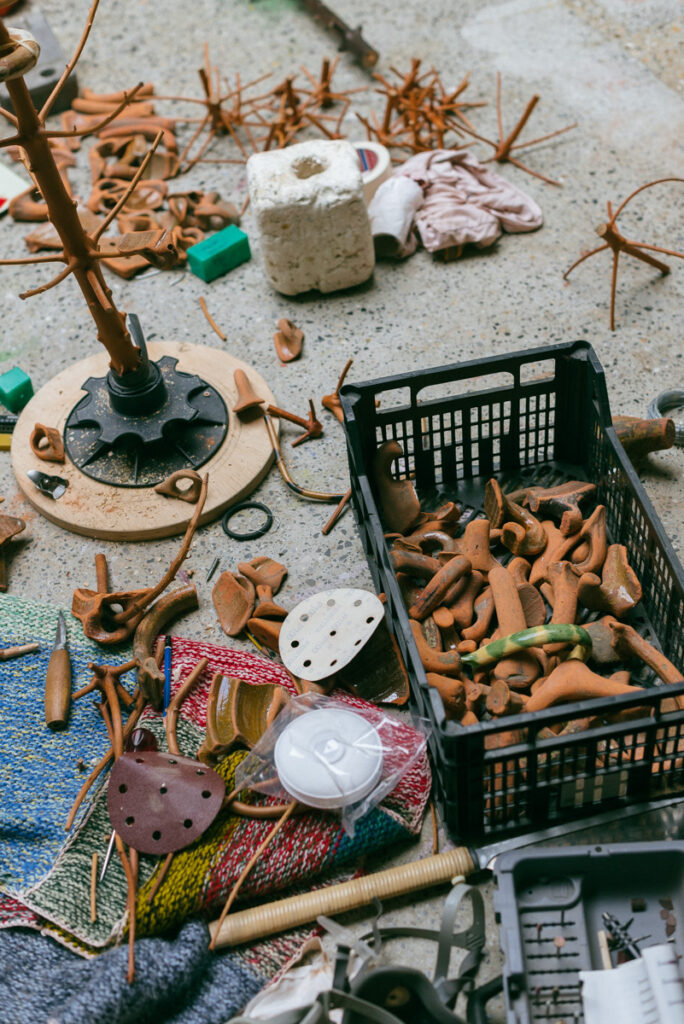
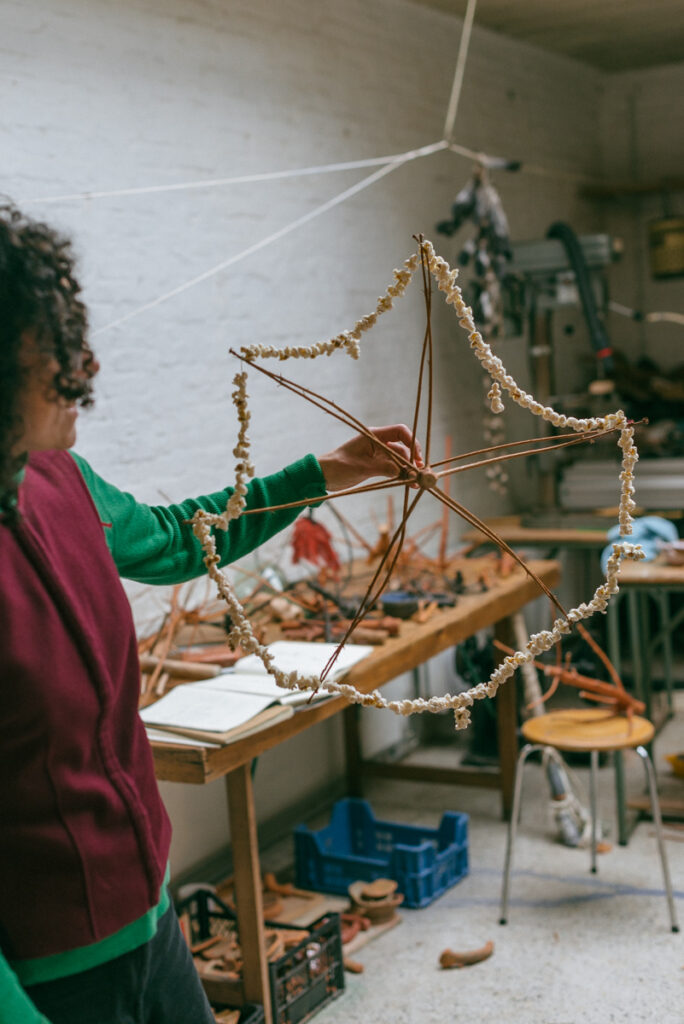
The earliest recorded mention of a Christmas tree dates to 1604 in Strasbourg: “At Christmas, a fir tree is put into the room, on which are hung roses made of colored paper, apples, wafers, tinsel, sweetmeats, etc.” This local custom gradually spread across Germany over the following 200 years and likely reached Antwerp around 1870.
However, there is no mention of a Christmas tree in the Bible, and if it had been part of Christian traditions, the Church would not have opposed it during the Middle Ages. The numerous prohibitions indicate how widespread the practice of venerating, illuminating, and decorating trees in the wild was within the Indo-Germanic cult. It is suggested that, due to ecclesiastical bans, tree worship continued secretly—indoors—and was eventually Christianized. Trees symbolized the cosmos and were considered the dwelling places of gods and the souls of ancestors. Yggdrasil, the world tree from the Edda, spanned heaven and earth, embodying the life force of nature. Nuts, apples, and pastries from the final sheaf of grain were likely offered as sacrifices to transfer vitality and fertility into the coming year. With their circular shape and wreaths, they symbolize the sun during the winter solstice.
When creating objects, I am searching for generating value and meaning that extends beyond the purely functional. Through the choice of materials, a slow and labor-intensive crafting process, collective creation, and the way objects are used, gifted, and passed on. The often temporary, seasonally available nature of the chosen materials determines the cyclical course of that search.
Tine Colen,
January 2025
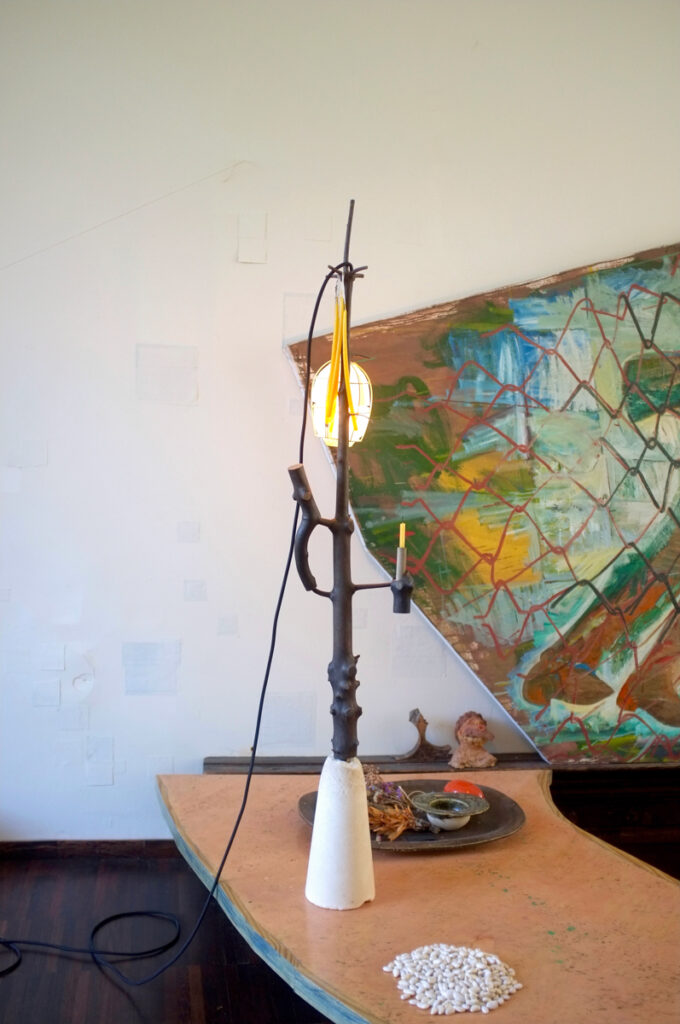
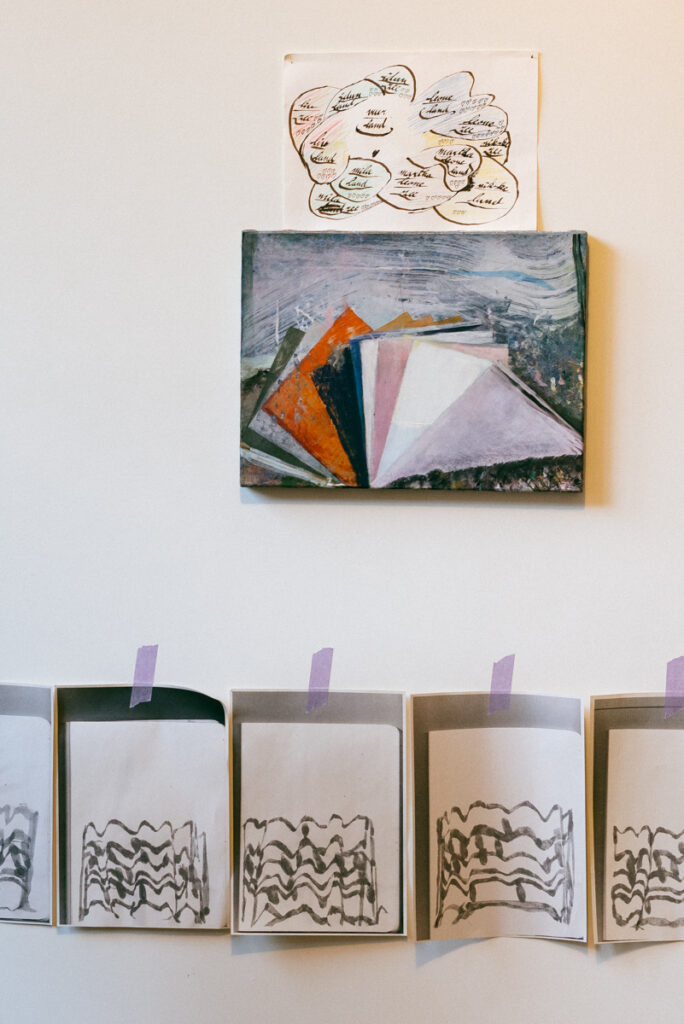
Links
Discover more of Tine Colen’s beautiful work at tinecolen.be
Mieke Verbijlen made some pretty photographs of the whisks.
Credits
Photo of the fir tree candleholder by Mieke Verbijlen.
